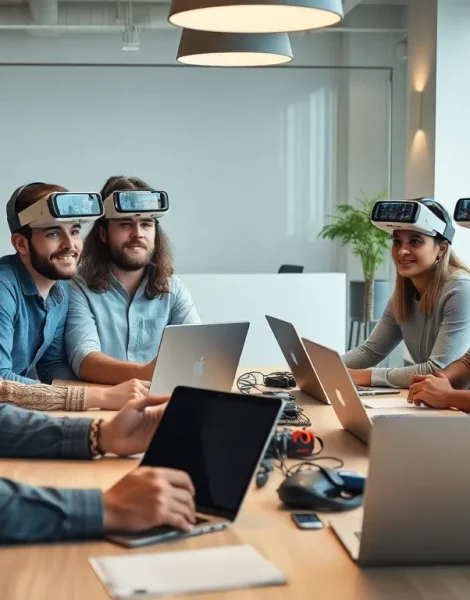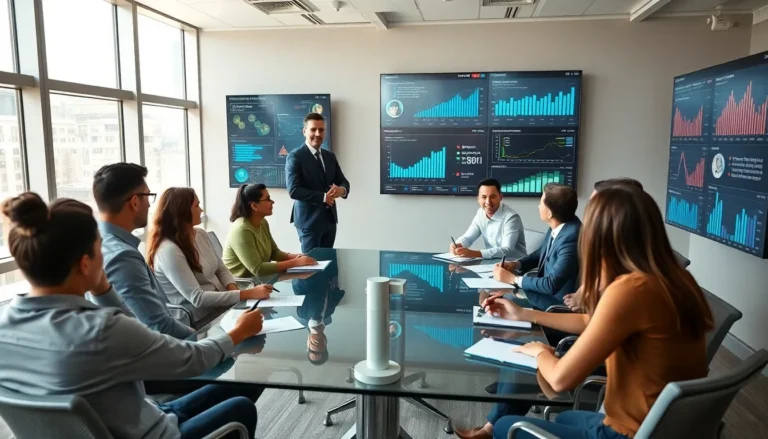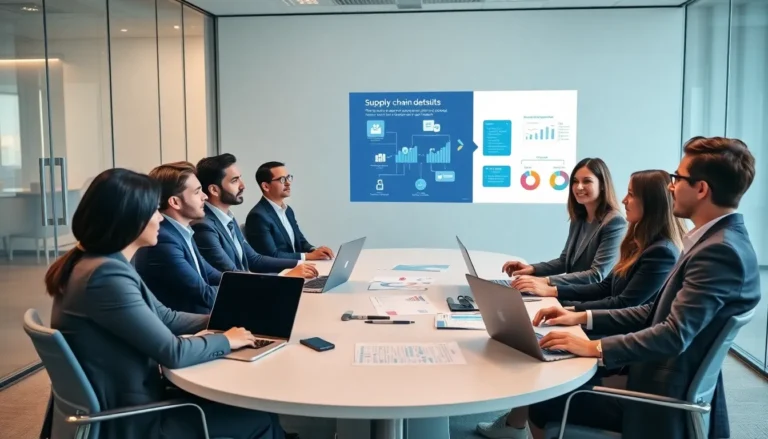In the fast-paced world of augmented reality (AR), bugs can feel like uninvited guests at a party—annoying and often stealing the spotlight. Just when users think they’re about to enjoy a seamless experience, a glitch pops up, leaving them scratching their heads. But fear not! Bug tracking in AR is here to save the day, turning those pesky pests into mere footnotes in the grand narrative of immersive technology.
Table of Contents
ToggleOverview of Bug Tracking in AR
Bug tracking in augmented reality enables developers to identify, document, and resolve issues efficiently. Tracking systems capture errors in real-time, ensuring immediate attention to glitches that affect user experience. The process often involves automated reporting tools that streamline the identification of bugs, which enhances operational efficiency.
Developers utilize various software solutions to manage bug tracking in AR. Popular tools integrate seamlessly into existing development workflows, allowing teams to document issues as they arise. This documentation becomes crucial, as it provides insights into recurring problems and assists in identifying root causes.
User feedback plays a significant role in bug tracking. Users report experiences with glitches, helping developers prioritize fixes based on the frequency and severity of issues. Active engagement with users also fosters a collaborative environment, leading to improved software quality.
Data analytics features within bug tracking tools enhance understanding. By analyzing trends, developers assess whether specific bugs occur more frequently in certain environments or devices. This information guides targeted testing efforts and prioritizes updates.
Prioritization becomes essential when managing multiple bugs. Categorizing issues by impact on the user experience enables developers to focus on high-priority fixes first. A proactive approach to tracking and resolving bugs not only improves software performance but also elevates user satisfaction.
The interplay between technology and user input shapes the landscape of bug tracking in AR. As developers continue to refine their processes, the overall quality of augmented reality applications improves, providing users with a richer, more immersive experience.
Importance of Bug Tracking in AR

Effective bug tracking significantly enhances the overall AR experience. Users quickly lose interest when faced with glitches that interrupt immersion. Developers can maintain user engagement by identifying and addressing these issues promptly.
Enhancing User Experience
Glitches lead to frustration, diminishing user satisfaction. Bug tracking tools capture errors in real-time, allowing teams to document and fix issues immediately. Feedback from users proves invaluable as it highlights critical glitches affecting immersion. By prioritizing fixes based on user reports, developers optimize the AR environment for smoother experiences. Prioritization ensures attention goes to the most impactful bugs first, leading to swift resolutions, which in turn fosters a loyal user base. Regular updates addressing high-severity issues enhance trust and reliability in AR applications.
Improving Development Efficiency
Bug tracking boosts development efficiency by streamlining the issue resolution process. Teams can integrate automated reporting systems into their workflows. This integration allows for real-time documentation, reducing time spent on tracking recurring bugs. Developers analyze data to identify trends, making targeted testing efforts more effective. Prioritization is essential here, focusing on critical bugs that disrupt functionality most significantly. With efficient resolution methods in place, development cycles become shorter, and product updates occur more frequently. Ultimately, this efficiency contributes to producing high-quality AR experiences that meet user expectations.
Popular Bug Tracking Tools for AR
Various tools support bug tracking in AR. These facilitate efficient issue management, enhancing overall user experience.
Tool 1: Features and Benefits
Tool 1 offers real-time error capture, which allows developers to identify glitches as they occur. This immediate visibility ensures timely resolutions, reducing user frustration significantly. Automation features minimize manual reporting efforts, streamlining the workflow for teams. Additionally, integrated analytics provide valuable insights into error trends. Developers can use these insights to prioritize bug fixes based on frequency and severity, ensuring that high-impact issues receive prompt attention. User feedback integration allows teams to adapt quickly, ultimately improving engagement and trust in AR applications.
Tool 2: Features and Benefits
Another reliable option, Tool 2 focuses on collaboration among team members. Features such as shared dashboards and comment sections enhance communication regarding bugs and fixes. These tools support integration with existing project management software, keeping all stakeholders informed. Data-driven prioritization helps teams stay focused on critical issues that affect user satisfaction. Routine updates improve the overall reliability of AR products, addressing significant glitches effectively. By fostering a responsive environment, developers can create a more stable user experience, encouraging users to return to the AR application.
Challenges in Bug Tracking for AR
Bug tracking in augmented reality (AR) encounters several notable challenges. Addressing these issues promptly enhances user experience and engagement in AR applications.
Complexity of AR Environments
AR environments often consist of intricate layers of technology and user interactions. Diverse hardware and software configurations add complexity to testing and debugging processes. Variability in user environments, including light conditions and physical surroundings, may lead to unexpected behavior. With multiple devices in use, ensuring consistency across platforms becomes challenging. These factors increase the likelihood of glitches and malfunctions. Prioritization of issues based on severity and frequency is crucial in a complex landscape, as fixing high-impact bugs can significantly improve user satisfaction.
Integration with Existing Workflows
Integration of bug tracking tools into existing workflows presents another challenge for developers. Teams often face resistance when adapting to new systems or processes. Effective communication among team members becomes critical, especially when addressing bugs across departments. Collaborating seamlessly with project management and development tools is necessary for maintaining efficiency. Prioritization of bug fixes within existing workflows ensures that important issues receive immediate attention. Developers can streamline processes and enhance productivity by leveraging tools designed for compatibility with current systems.
Future Trends in Bug Tracking for AR
New advancements in bug tracking for AR are set to reshape the development landscape. Increased reliance on artificial intelligence enhances the ability to identify bugs swiftly. Predictive analytics now helps developers anticipate issues before they arise, significantly reducing downtime.
Real-time feedback integration remains crucial for optimizing user experiences. Advanced tools allow users to report bugs seamlessly, transforming feedback into actionable data. Continuous improvement practices emphasize the importance of addressing high-severity bugs quickly to maintain user engagement.
Enhanced user collaboration tools foster improved communication among team members. Remote working environments benefit from shared dashboards that make prioritizing fixes easier. Such platforms encourage team members to contribute their insights, ensuring that no critical issue goes unnoticed.
Data visualization tools provide insights into common bug patterns. Teams can analyze this data to target specific areas that require attention. By examining user interactions, developers better understand the most disruptive bugs and prioritize them accordingly.
Virtual and augmented reality technologies undergo constant evolution. Adapting bug tracking processes to accommodate new features is essential for enhancing the user experience. Methods such as automated QA testing and cloud-based collaboration streamline the resolution process, making it more effective.
Emphasis on user experience drives developers to create immersive, glitch-free applications. Regular updates that focus on fixing significant bugs help maintain user trust. Overall, the interplay of innovative technology and user input is setting the stage for improved bug tracking in AR, leading to more reliable and engaging applications.
The future of bug tracking in augmented reality is bright as developers continue to refine their approaches. By harnessing advanced tools and techniques, they can tackle the unique challenges posed by AR environments. This proactive stance not only enhances software performance but also significantly boosts user satisfaction.
As technology evolves, the integration of AI and real-time feedback will play a crucial role in identifying and resolving issues more efficiently. The emphasis on collaboration and data analytics will ensure that developers remain responsive to user needs. Ultimately, a commitment to effective bug tracking will lead to richer and more immersive AR experiences, encouraging users to engage consistently with these innovative applications.









